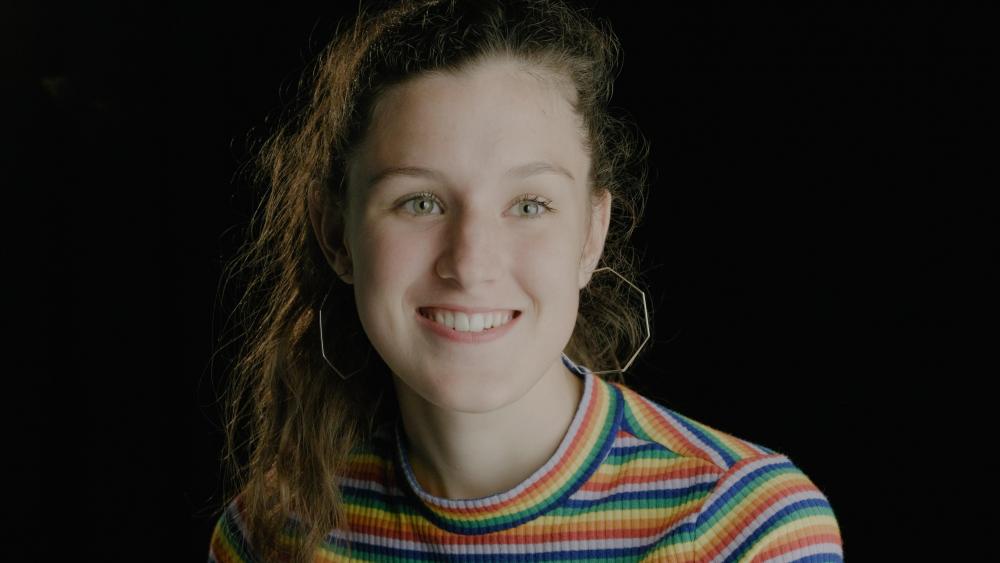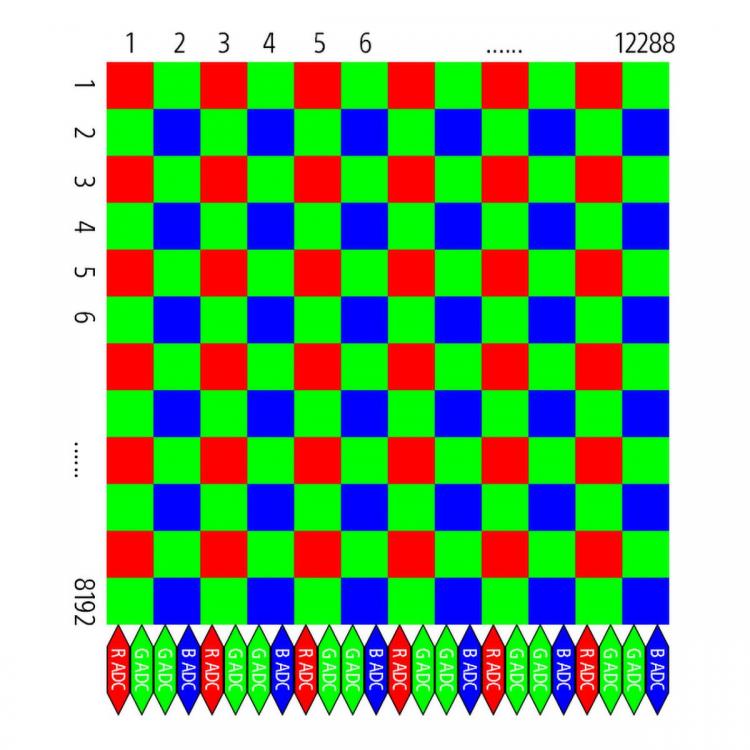
androidlad
-
Posts
1,215 -
Joined
-
Last visited
Content Type
Profiles
Forums
Articles
Posts posted by androidlad
-
-
Until we have variable curvature sensor, curved sensor at this size will largely be limited to industrial/scientific use as one curvature has to match a specific focal length.
-
-
Interesting they've now changed the wording:
-
7 hours ago, IronFilm said:
Isn't an Arri patent holding people back from doing that?
2 ADC readout isn't a patent. The Fairchild sensor in URSA 4.6K uses dual 11bit ADC readout for a claimed 15EV DR.
But DOL HDR is a Sony patent though, each ADC readout has different exposure with 0.1ms interval. The biggest drawback of this readout mode is rolling shutter time will double.
-
27 minutes ago, DanielVranic said:
ProResRAW would be so dope for the Fuji-XT3
ProRes RAW only works with Bayer sensor.
X-Trans RAW stills are already problematic, I can't imagine how disastrous it would be in video.
-
54 minutes ago, thebrothersthre3 said:
Internal ND's are a must. Would be nice if they threw in an SD card slot as well for lower bitrate recording.
The awesome thing about this camera is the recording options. RAW as well as H264 and H265, and Prores(I assume they will put in Prores as well?)
4k 120fps would have been a really smart move even if it means making the camera larger.The sensor itself is not capable of 4K 120P. Unlike the original E2, this uses a stills-oriented sensor.
-
16 minutes ago, majoraxis said:
Even though the price is higher than I would like, it seems to make sense with 6k 60p for $4k with 14 stops of dynamic range with RAW 14bit video and XLR audio in etc. If it is really good in low light with a small camera body, then it competes nicely with the USRA Mini Pro G2, if they can add internal ND.
I could see even large productions using this as a crash camera, b-camera or a-camera for low light and for lower budget production as a-camera.
There couldn't be a better time to be a digital film maker when it comes to purchasing a camera that is good enough for almost everything you could want to film... except say, two years from now when all of these great cameras are available used at a discount after the new 8k versions come out...
With 14bit ADC, the actual usable DR won’t be 14EV, you just get very clean blacks that get you nice numbers shooting charts. This is one of the reasons Fuji never went with 16bit on XT3 and GFX100.
But if they could properly implement DOL HDR mode on this IMX571 sensor with 2 ADC readout, it would have great potential.
-
P20 Pro users: Turn down the horrendous sharpening please Huawei!!
Huawei: Turn down for what?
-
Thanks for uploading the files.
They all exhibit pronounced "water colour" effect. When viewed at small to medium size, they look clean but if you view 100% or zoom in further, there's very little fine detail and texture, grain is almost non-existent (not in a good way).
I suspect it's the combination of S1's internal noise reduction, and 72Mbps H.265 compression. We all know H.265 gets a large portion of its efficiency gain by reducing high frequency details. Remember, GoPro shoots 4K at 78Mbps H.265.
-
It depends on what picture profile/gamma curve you use. For example, F-log maps 18% grey to 46IRE. Also at times you may want to deviate from the guidelines, especially in high contrast scenes, typically you'd underexpose a bit for better highlight detail retention.
-
9 minutes ago, Ed_David said:
looks like
1/45 is 0.022222222222222 ms
1/45s is 22ms.
-
44 minutes ago, Towd said:
Color aware binning that doesn't throw out data. Sounds cool. Would love to read the white paper on how they bin the data without throwing anything away.
In the meantime my point stands that a lower megapixel sensor with the same capabilities would be more useful.
Yeah there's a 61MP 3.76um FF in the works.
100MP will be the cap for Sony FF sensor as Sony claims that their FF lenses "are designed to resolve 100MP".
-
1 minute ago, Towd said:
Yeah, but in the spec you posted it says it does 6k readout through pixel binning/sub sampling. So it's throwing away data that could have been preserved.
I just looks to me more like a chip designed by a marketing department than something to serve the needs of filmmakers. Granted it's for consumer devices and megapixels sell cameras, so it's not like I'm surprised.
My experience has been that engineers have very little experience with end user needs, and that was my point.
It's a sensor designed for stills camera with video capability, and the key video spec is 4K RGB 444 with 3x3 colour-aware binning, nothing is thrown away.
-
3 hours ago, Nikkor said:
With The Same Technology applied to large and to small Sensors, guess which one will have larger full well capacity and less rolling shutter.
100MP is total overkill for fullframe, when will you See diffraction? F5.6? Will they build in a focus stacking program for landscapes? Moving the ibis back and forth, using phase detection pixels to make a depthmap? I know they are not.
What's the obsession with per-pixel FWC? Don't forget the pixels sit on a 36x24mm sensor, smaller pixels don't collect any less light, it's just there are more of them doing the same thing.
this 100MP 2.91um pixel has a FWC of 32800e-, if we do a 2x2 binning and use it as a 25MP sensor, the FWC increases to 131200e-, which is significantly higher than 24MP A7 III 95764e-.
Regarding diffraction, f/5.6 is a theoretical value yes, but in reality it's not clear cut like that https://fstoppers.com/education/5ds-f11-and-confusing-circles-68177
-
20 minutes ago, Gianluca said:
Androidlad, ok QE and and DR, but readout speed faster than a 4 time less megapixel....
Yep, IMX410 has 2-parallel ADC, this one has many many times more than that.
-
9 minutes ago, liork said:
It should be interesting to see how making a 8MP out of 100MP turns out in term of moire, aliasing etc.
12288/4096 = 3.
3 x 3 colour-ware binning with the above mentioned CFA-based ADC, producing 4096x2160 RGB 4:4:4 stream directly on-chip.
-
38 minutes ago, Towd said:
I know that Sony's sensor architects don't deliver movies. But I can see some value to a 100mpix sensor for stills.
I have to agree with @Nikkor though, I'd love to see them continue to improve dynamic range and rolling shutter in their consumer line more than resolution.
It's interesting that people simply assume high resolution sensors have less dynamic range and worse rolling shutter.
I'll post more info when I'm allowed to, but for now I can say when normalised to 4K, this 100MP sensor performs better than A7 III in terms of dynamic range, sensitivity (QE) and readout speed.
-
29 minutes ago, Nikkor said:
Pointless 100mp on a small sensor. I wish they would rather work on full well capacity or something else that gives more dynamic range.
Sony has some of the most talented sensor architects, how much do you know? ?
The diagram above is exactly one of many innovative designs to improve sensitivity and dynamic range.
-
8 hours ago, neilmac said:
Thanks android
BenQ's Palette Master installed on MAC does not see the monitor that is connected via the mini monitor so you can't calibrate it. is there a way around this
Calibrate using direct connection between mac and the monitor.
-
-
11 minutes ago, thephoenix said:
it's a bit weired when your have in the pv270 color menu settings to choose between rec709 and your calibration.
rec709 should be ok for video
The presets are not accurately calibrated.
-
7 hours ago, neilmac said:
Hi there
I have the PV 270 that is attached to a mac vis Ultrastudio mini monitor. Does any one know how I calibrate the monitor through the mini monitor as I understand it this affects the screen image. Or should I just connect direct to the HDMI output of the mac?
Hardware calibration result is applied to all inputs on the monitor.
-
1 minute ago, thephoenix said:
you mean 100 cd/m2 in the luminance calibration settings ?
Yes.
-
2 minutes ago, thephoenix said:
ok. i do have the i1 and i use it to calibrate my monitor but i have no recall of nits value at any moment.
i just run the i1 profiler and do what it tells me to do.
It should be calibrated with BenQ's own tool Palette Master so you can access the hardware 3D LUT.



Sony Semicon develops 100MP FF sensor with 6K video
In: Cameras
Posted
4K RGB 4:4:4 readout mode: